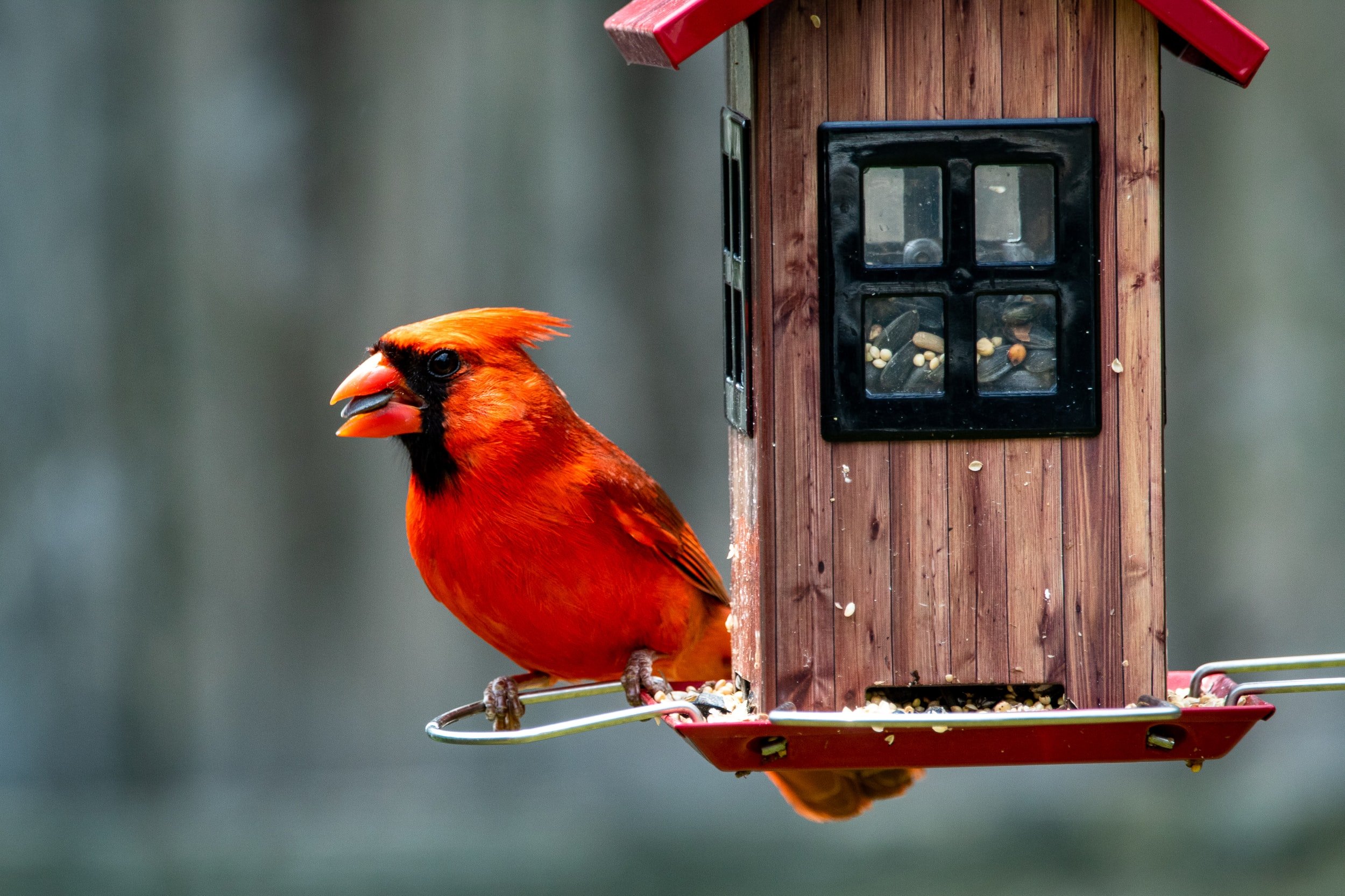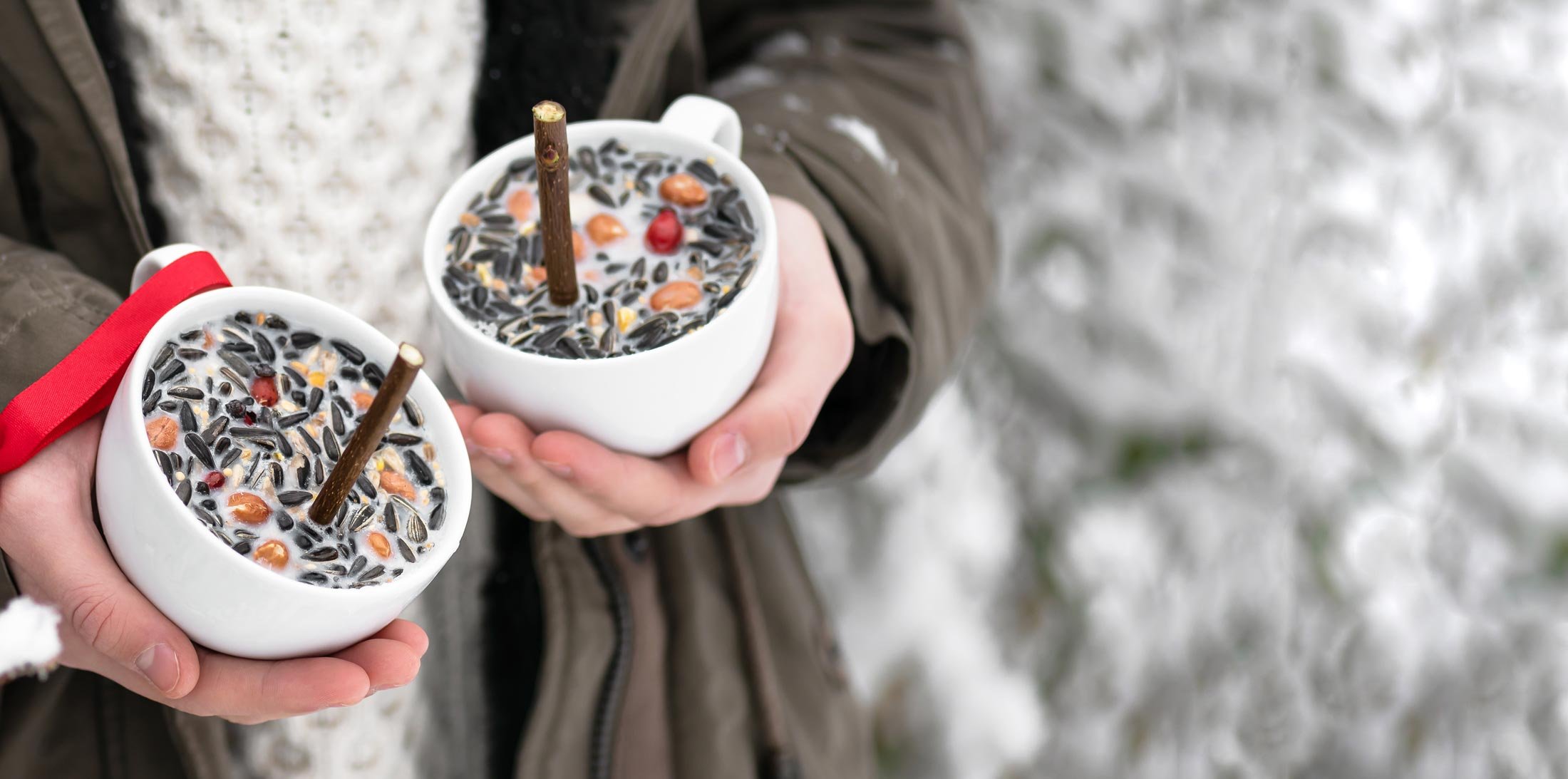
HELP BIRDS THRIVE
February is National Bird-Feeding Month — be a hero and #FeedTheBirds!
How to Participate
-

Choose Nutritious
Keep your feeder full of wild bird food blends that contain energy-rich foods like sunflower seeds and nuts to help sustain birds’ energy.
-

Choose Energy Rich
Hang a suet feeder in your yard and offer suet cakes blended with high-energy sunflower and nuts to help birds stay warm.
-

Offer Water
Consider a heated birdbath so birds can have access to a fresh source of water during freezing temperatures.
-

Offer Safety
Provide nest boxes during cold seasons so wild birds have a place to shelter and stay warm.
Help spread awareness by inviting your friends and family to participate in National Bird-Feeding Month!
Wild birds have intrigued us for centuries with their vibrant colors, unique characteristics, and innate ability to endure harsh conditions and intense migration routes. Wild birds are true survivalists, but even they can use a helping hand to get through the cold winter months when snow covers the ground, and their natural sources of food are dwindling.
To raise awareness for the plight of wild birds during the wintertime, Congressman John Porter (R-IL) read the following proclamation before Congress on February 23, 1994:
‘‘I would like to recognize February, one of the most difficult months in the United States for wild birds, as National Bird-Feeding Month. During this month, individuals are encouraged to provide food, water, and shelter to help wild birds survive. This assistance benefits the environment by supplementing the wild bird’s natural diet of weed seeds and insects. Currently, one third of the U.S. adult population feeds wild birds in their backyards.
In addition, Mr. Speaker, backyard bird feeding is an entertaining, educational, and inexpensive pastime enjoyed by children and adults. Bird feeding provides a needed break from today's frantic lifestyles. Adults enjoy the relaxation and peacefulness afforded by watching birds – nature serves to relieve the stress and can get one's day going on a tranquil note.
Young children are naturally drawn to the activities involved in feeding wild birds, which can serve as excellent educational tools. Children can identify different species of birds with a field guide and can learn about the birds' feeding and living habits. These observations can then provide excellent research opportunities for school projects and reports.
Feeding wild birds in the backyard is an easy hobby to start and need not overtax the family budget. It can be as simple as mounting a single feeder outside a window and filling it with bird seed mix. For many people, the hobby progresses from there. They discover the relationship between the type and location of feeders, and the seeds offered in them, and the number and varieties of birds attracted. Parents can challenge an inquisitive child's mind as they explore together these factors in trying to encourage visits by their favorite birds.”



